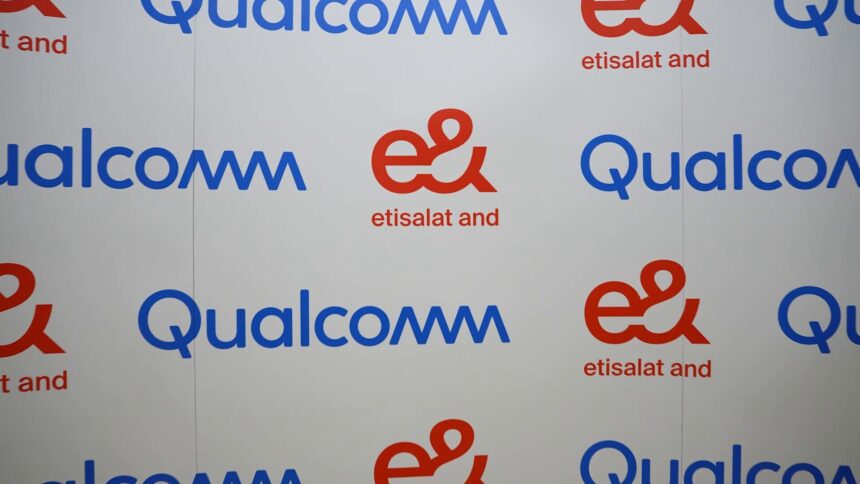e& UAE and Qualcomm are taking their industrial AI partnership public—literally. After pilot projects, the pair are now deploying edge-powered systems across the UAE in energy, transport and public safety. The kit ranges from 5G gateways and AI PCs to smart glasses and drones. The idea is simple: process data at the edge, act in real time, and show clear results, not slide decks.
What’s actually going live
This isn’t another “innovation MoU”. e& UAE says deployments are progressing across key sectors with Qualcomm’s edge AI platform in the mix. The approach is on-device and on-site, which cuts latency and keeps sensitive data local.
- Edge endpoints: 5G gateways, AI PCs, smart glasses, drones, mobility systems.
- Sectors: energy, transportation, public safety.
- Outcome focus: measurable improvements, not proofs of concept.
Moving compute closer to where data is created matters. Wind farms, road junctions and city cameras don’t have time to wait on a distant cloud. Edge nodes can flag faults, spot hazards or guide staff the moment something happens, then sync summaries to the cloud for audit and training.
Why edge AI, not just cloud AI
The partnership leans on e& UAE’s network footprint and Qualcomm’s silicon and software for the edge. That means decisions can be made even with patchy connectivity, and at a lower cost per event.
- Lower latency for time-critical events.
- Better privacy—data can stay on-prem or on-device.
- Lower bandwidth bills by sending only what’s useful.
- Resilience when connections drop.
For the UAE, where energy sites span large distances and roads get busy fast, shaving milliseconds off detection and response can be the difference between a near-miss and a pile-up.
What it could look like in the field
The companies didn’t list individual customers, but the hardware clues tell their own story. Each device class maps neatly to common industrial jobs.
- 5G gateways: connect sensors, cameras and PLCs, then run lightweight models for anomaly detection.
- AI PCs: mobile supervisors run bigger local models for planning, reporting and visual analytics.
- Smart glasses: guide technicians with step-by-step overlays, remote assist and object recognition.
- Drones: automate inspections of lines, pipes and sites with on-board inference.
- Mobility systems: computer-vision units monitor intersections, bus stops and depots for safety.
In practice, a maintenance lead could see AR prompts through glasses while a 5G gateway flags a pressure spike upstream. The gateway acts first (shut a valve), the glasses keep the tech safe, and a dashboard on an AI PC logs it all for compliance. Clean, quick, and accountable.
Measuring success (the boring bit that matters)
The release stresses “measurable improvements”. Good—because AI without KPIs is just expensive software. Expect the usual scorecard, tuned for local ops.
- Uptime gains for assets in energy.
- Incident detection and response times in transport and public safety.
- Technician productivity and first-time fix rate with wearables.
- Network and compute cost per analysed event.
- False positive/negative rates for safety systems.
Set baselines, publish deltas, and iterate. That’s how pilots become platforms.
Where this fits in the UAE tech stack
This move lines up with the country’s wider digital agenda: push intelligence to the edge, modernise infrastructure, and build skills around it. It also opens doors for local integrators—OT vendors, camera and sensor makers, and software firms that understand industrial data.
- e& UAE brings nationwide connectivity and enterprise routes to market.
- Qualcomm brings edge compute, reference designs and toolchains.
- UAE industry brings domain data and real-world constraints.
If you’re evaluating endpoints for your fleet, our recent coverage of AI-ready PCs and Qualcomm’s latest silicon offers useful context on what to spec and why. See our pieces on AI PCs in 2025 and Qualcomm’s recent AI platform updates for a sense of performance classes and deployment options:
What enterprises should do next
You don’t need a moon-shot to start. Pick one site, one workflow and one clear metric. Then scale what works.
- Audit data sources: cameras, sensors, logs, radio.
- Choose edge nodes by job, not by hype.
- Set a KPI that money cares about.
- Involve HSE and compliance from day one.
- Train staff; don’t assume “AI” equals autopilot.
What sectors are included in the rollout?
Energy, transportation and public safety. The partners say they’re moving from pilots to live deployments across these areas.
What hardware is involved?
Edge-first gear: 5G gateways, AI PCs, smart glasses, drones and mobility systems. The aim is real-time analysis and action close to where data is created.
Why use edge AI instead of just cloud AI?
Latency, privacy and reliability. Edge systems respond faster, keep sensitive data local, and keep working even if the link to the cloud drops.






















